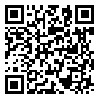BibTeX | RIS | EndNote | Medlars | ProCite | Reference Manager | RefWorks
Send citation to:
URL: http://jdm.tums.ac.ir/article-1-516-en.html
It has been shown that noble alloys require metal collar to resist distortion when subjected to repeat firing cycle of porcelain. Metal collar is undesirable due to esthetic concerns. Since base metal alloys have superior physical properties, it seems that metal collar would not be necessary for obtaining better marginal adaptation of base metal crowns. The Purpose of this study was to evaluate the effect of metal collar on marginal distortion of base metal- ceramic crowns, Twenty base metal copings were constructed and divided into two groups with and without collars. After surface preparation, porcelain was applied onto the surface of specimens. Marginal gap was measured by scanning electron microscope during three stages of crown fabrication: before degassing, after degassing and after glazing. The mean measurements in collarless group were 21.4±13.4, 2I.4±14.9 and 21.9±11.9 u_m, respectively, and in-group with collar 24.7±11.4, 24.0±! 1.5 and 26.6±11.7 urn, respectively. Two- way ANOVA revealed no significant difference in the mean values between two groups and among different stages of crown fabrication. The results of this study showed that base metal alloys did not distort during crown fabrication and metal collar had no effect on the amount of marginal opening (gap).
| Rights and Permissions | |
 |
This work is licensed under a Creative Commons Attribution-NonCommercial 4.0 International License. |




